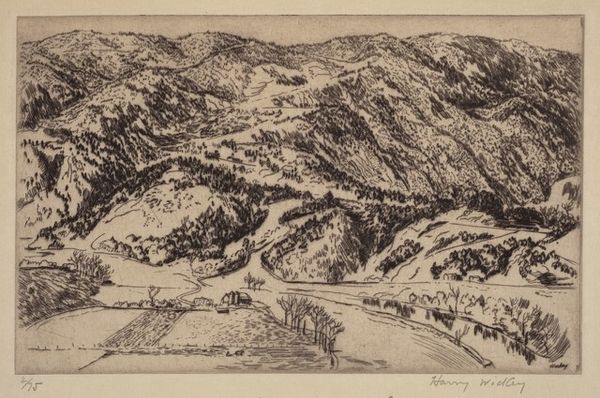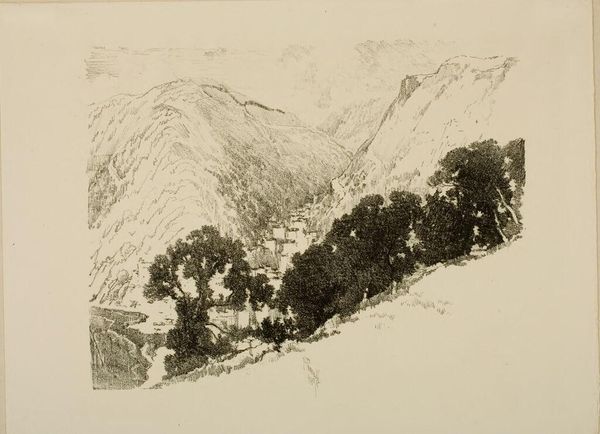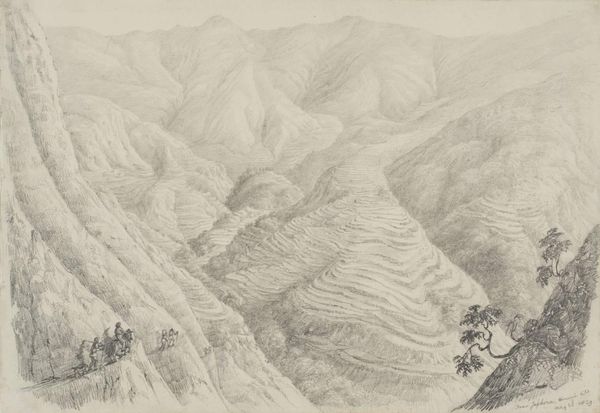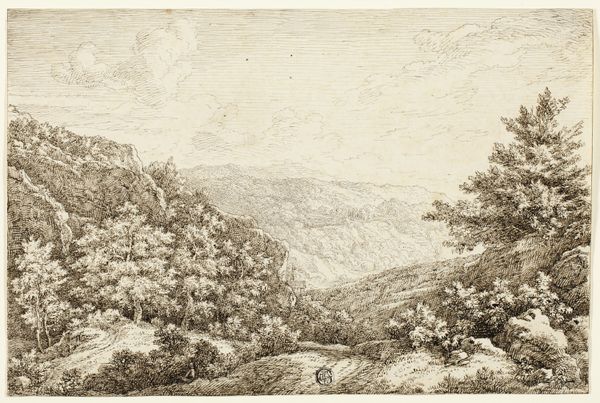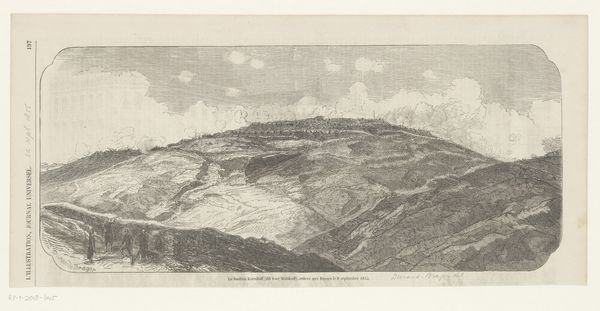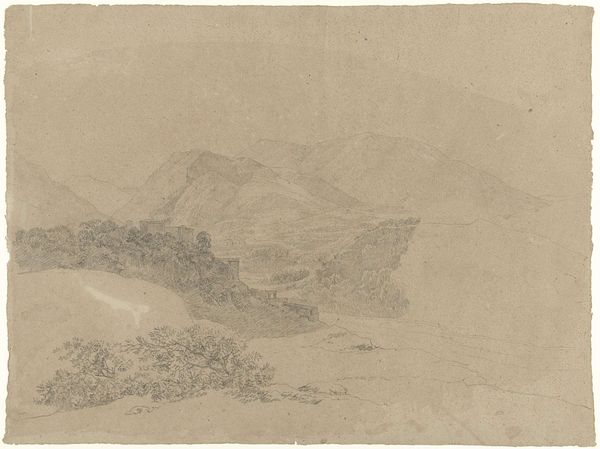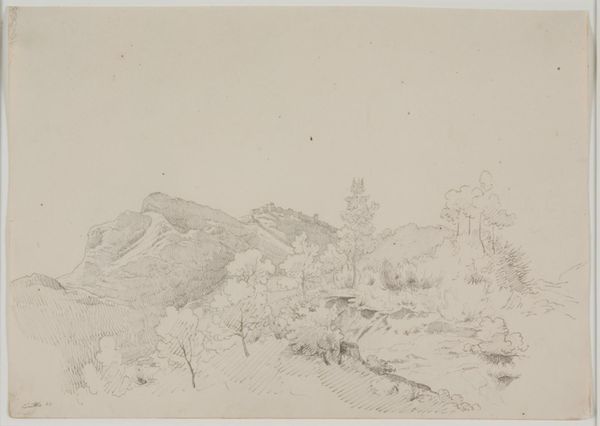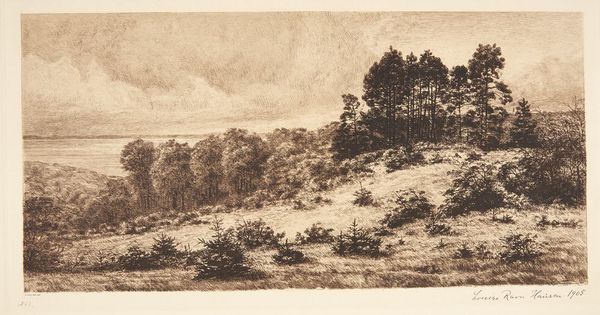
# print
#
landscape
#
geometric
Dimensions: plate: 67 x 86.3 cm (26 3/8 x 34 in.) sheet (folded): 72.2 x 97 cm (28 7/16 x 38 3/16 in.)
Copyright: National Gallery of Art: CC0 1.0
Curator: Moishe Smith's "Liguria," a print from 1963, presents a stunning, almost dreamlike landscape. What are your initial impressions? Editor: Whoa. It's like looking at a charcoal drawing… a hyper-detailed nightmare forest, but inviting. It feels almost claustrophobic. I feel surrounded. The landscape rises right up to the viewer. Does that make sense? Curator: Absolutely. We see a mountainous region, possibly depicting the Italian region of Liguria, hence the title. The interesting thing to note here is Smith’s engagement with geometric forms, which challenges conventional ideas around landscape art as inherently ‘natural’ or ‘picturesque.’ He seems to question the idea of "pure nature," revealing how our ways of perceiving and depicting are mediated by our thinking. Editor: It is strange, though, how much detail is crammed into one frame. Check out those houses tucked among the trees. I see life here… but I mostly just see all the textures. The soft leaves contrast sharply with geometric shapes of the constructed environment, right? And it’s all gray… So much gray… What does it mean? Is Smith expressing something deeper, you know? Like, the anxiety of place? Curator: I believe he prompts viewers to reconsider landscape art beyond mere scenic appreciation, and how our environment has come to exist. The high contrast evokes social anxieties and speaks about ownership of land, about whose view we are privileged to see in this piece, and what stories are not present, whose labors made such an idyllic setting. Editor: That's a super intense reading. But maybe he just liked the play of light and shadow? Or how trees are different up close? Maybe he just liked those Italian villas tucked between the foliage? What I like about it is that I’m also allowed to be both drawn in and pushed away. Like real life, actually. Curator: That complexity makes the piece all the more interesting for engaging with its historical and social layers. This is how art should function! Editor: For me, it just feels moody. And that mood is all about questions with no real answers… and maybe a touch of genius.
Comments
No comments
Be the first to comment and join the conversation on the ultimate creative platform.
